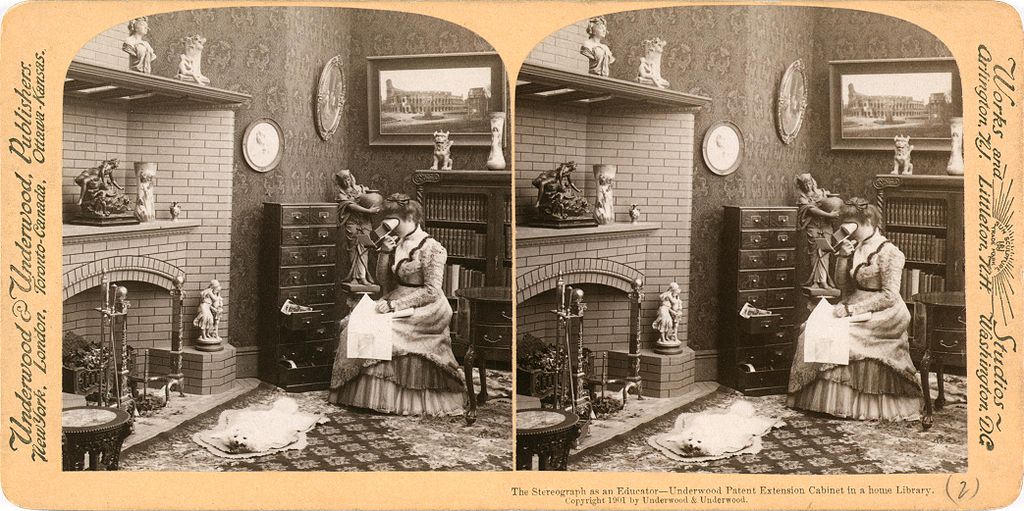The Merriam-Webster definition of virtual reality is an artificial environment experienced through sensory stimuli. When we think of virtual reality now, our first thought goes to a funny looking headset and people sticking their hands out and feeling around as if they can really touch something in front of them. However, the history of VR goes back longer than you think. The concept of virtual reality dates back further than our invention of computers, even!
The Beginning of VR: 3D Images
In 1838, Charles Wheatstone discovered that our brain takes two-dimensional images from each eye and turns it into one three-dimensional image. That discovery opened the door for more complex experiments in virtual reality, starting with the stereoscope. This early VR machine turned those two images into a 3D image, and it was followed by the lenticular stereoscope invented by a man named David Brewster. One of the most popular early 3D devices was the View-Master, introduced in 1939. Originally sold at gift shops and stationery places, it was designed as an alternative to postcards, offering tourists and travelers a way to re-experience the destination.
The Next Developments: Motion in VR
In addition to 3D visuals, early VR systems also had other senses like motion. Motion simulators were developed along with the first generation of electronic computers. Motion simulators were beneficial because they created the sensation of being in a moving vehicle. In those early days, motion simulators were used for everything from flight simulation to theme park rides.
Early VR Systems
The Father of Virtual Reality, Morton Heilig, invented the Sensorama machine in 1957 to give users an unparalleled immersive experience. This device utilized 3-D motion picture with seat vibrations, sound, smell, and even wind in hair to create the illusion of reality. He later created the Telesphere Mask, the first head-mounted display, which featured stereoscopic TV, wide vision, and stereo sound. In 1969, Heilig built the Sensorama simulator for a larger audience and created the Experience Theater.
While Heilig was developing sensational simulators, Myron Kruegere developed a computer-generated environment that responded to the people in it. He named this experience “artificial reality” and this research lead to the eventual development of VIDEOPLACE technology. The Videoplace was an artificial reality lab at the University of Connecticut that used video cameras, special hardware, and even onscreen silhouettes to put the users within an interactive environment.
The Birth of “Virtual Reality”
Finally, in 1987 we get a name for all of this technology. Jaron Lanier, founder of the Visual Programming Lab, came up with the term “virtual reality.” Lanier’s company, VPL Research, was the first company to sell virtual reality to the public. Their VR sets contained Virtual Reality goggles (called the EyePhone1!) and gloves to manipulate the environment.
In the 1990s, there were many attempts from video game companies to create and sell VR glasses to the public. SEGA was first with the Sega VR headset for the Genesis console. Despite best efforts to release the product, technical difficulties meant the product never left its prototype phase. In 1995, Nintendo took a shot at creating a 3D console called the Virtual Boy or VR-32. It was released but was ultimately a failure due to the lack of color graphics, software support, and it was difficult to comfortably use the product.
The Present & Future of VR
With the rise of technology offering advanced 3D graphics capabilities, the development of virtual reality has seen major growth. Natural human interfaces, depth sensing cameras, and motion controllers have become commonplace in our day to day life and the video game industry has continued to develop virtual reality for the average consumer. These days, VR is even being used in cognitive therapy to stimulate the brain and recreational therapy to improve quality of life.
Sources:
https://www.vrs.org.uk/virtual-reality/history.html
http://www.virtualrealityguide.com/history-of-virtual-reality

